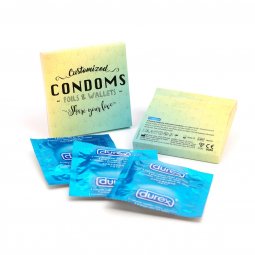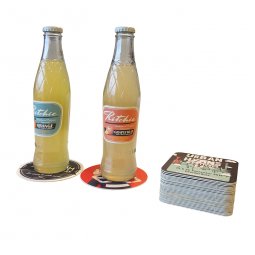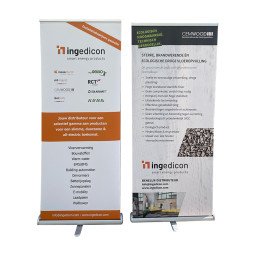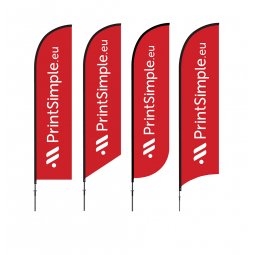Which cutting techniques are there?
Depending on the material you order and the shape you want the final product to have, there are different cutting techniques available to finish your product. Although these cutting techniques are all used to cut materials into a certain shape, each has its own specific application and technique. In this FAQ, we explain different cutting techniques.
Clean cut
Clean-cutting involves cutting excess material away from the edges of the printed material. This gives the design a clean and neat finish. This is the standard finish on all paper printing, such as flyers and brochures.
Laser cut
 Laser cutting uses a laser to cut the final size from the material. This technique is used, with materials such as paper (e.g. round stickers), cardboard, wood, acrylic, textiles and leather.
Laser cutting uses a laser to cut the final size from the material. This technique is used, with materials such as paper (e.g. round stickers), cardboard, wood, acrylic, textiles and leather.
Punching
 Punching is a cutting technique in which a die cut is used to cut out a material. The die cut is made from a metal blade in the desired shape, such as rectangles or circles, but can also have more complex shapes. Consider, for example, the outline of a presentation folder or product packaging. The blade is placed in the cutting machine and used to cut the material into the desired shape.
Punching is a cutting technique in which a die cut is used to cut out a material. The die cut is made from a metal blade in the desired shape, such as rectangles or circles, but can also have more complex shapes. Consider, for example, the outline of a presentation folder or product packaging. The blade is placed in the cutting machine and used to cut the material into the desired shape.
Contour cutting
Contour cutting (contour cut) indicates that your printed material will be cut into a special shape. This can be a simple round shape or a completely different shape.
With contour cutting, it is important that you add a cutting line in your file, so we know how you want the shape cut out.
When contour cutting printed stickers, there are 2 different options, the kiss cut and die cut.
Kiss cut
 With a kiss cut, the blade of the die cutter is set so that only the top layer of the material is cut, while the bottom layer remains intact. This creates a contour-cut sticker with a peeling edge, making it easy to remove the sticker from the film.
With a kiss cut, the blade of the die cutter is set so that only the top layer of the material is cut, while the bottom layer remains intact. This creates a contour-cut sticker with a peeling edge, making it easy to remove the sticker from the film.
Die cut
 A die cut involves cutting through both the top layer and the bottom layer of a decal. The end result is a loose shape.
A die cut involves cutting through both the top layer and the bottom layer of a decal. The end result is a loose shape.



